Aponogeton undulatus
Scientific name: Aponogeton undulatus
Family: Aponogetonaceae
Maximum size reached under cultivation: 50 - 60 cm (19.69 - 23.62 inch)
014
Recommended pH range: 6.8 - 7.2
Recommended water hardness: 4 - 12°dGH (71.43 - 214.29ppm)
0°C 32°F30°C 86°F
Recommended temperature range: 22 - 28 °C (71.6 - 82.4°F)
Preferred propagation method: Seeds
Native to: South Asia
Growth rate: Fast
Recommended substrate: Fine gravel
Lighting requirements: Medium
Ideal placement in tank: Background
🌿 Family
Aponogetonaceae
🏷️ Scientific Name
Aponogeton undulatus
🌍 Origin
This species originates from East India and Bangladesh, where it grows in still or slow-moving waters, such as rice paddies and shallow streams. In its natural habitat, it often experiences both submerged and emersed conditions depending on the season, but in aquariums, it thrives best when kept fully submerged.
📏 Size and Placement
With a maximum height of 50–60 cm, Aponogeton undulatus is best placed in the background of medium to large aquariums. Its long, undulating leaves create a graceful, flowing visual effect that complements many aquascapes.
💡 Lighting Requirements
This plant prefers medium lighting. It tolerates lower light levels but grows much faster and healthier under moderate to bright lighting.
🌱 Substrate and Nutrients
Aponogeton undulatus grows well in fine gravel or sand. Nutrient-rich substrate or root tabs are recommended to support strong development, especially during its most active growth phases.
🌾 Propagation
Propagation occurs primarily via seeds, which are produced after flowering. However, flowering in aquariums is uncommon unless grown emersed. Occasionally, the bulb may produce daughter plants, which can be gently separated and replanted once they form their own roots.
⚙️ Difficulty
Easy to Moderate. This plant adapts well to aquarium life, especially if it receives stable water conditions and sufficient nutrients.
📝 Short Description
Aponogeton undulatus is a beautiful and fast-growing aquatic plant known for its wavy (undulate) leaf edges and vibrant green coloration. It grows from a bulb and produces leaves that can float or wave gently in the current. It does best when fully submerged and may enter a short dormant period during which growth slows. Patience is required, but it typically recovers quickly when conditions remain stable. This species adds natural elegance to any planted aquarium.
❓ FAQ – Frequently Asked Questions
- Can Aponogeton undulatus grow in low light?
It may survive under low light but will grow much slower and may develop narrower or elongated leaves. Medium lighting is strongly recommended. - Does this plant need CO2 supplementation?
CO2 is not required but can enhance growth and coloration in a well-maintained setup. - What should I do during its dormant phase?
If your plant stops growing and sheds leaves, reduce lighting and fertilization slightly. Leave the bulb in the substrate; growth should resume in a few weeks. - Can it be grown emersed?
Yes, but in aquariums it is best kept fully submerged. Emersed growth is more common in seasonal wild habitats. - Is it compatible with community tanks?
Yes, it is peaceful and safe with most community fish. Avoid herbivorous fish that might nibble on tender leaves.

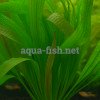 Aponogeton bovianus
Aponogeton bovianus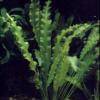 Aponogeton crispus
Aponogeton crispus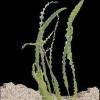 Aponogeton longiplumulosus
Aponogeton longiplumulosus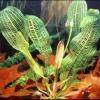 Aponogeton madagascariensis
Aponogeton madagascariensis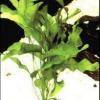 Aponogeton natans
Aponogeton natans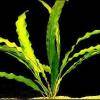 Aponogeton rigidifolius
Aponogeton rigidifolius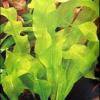 Aponogeton ulvaceus
Aponogeton ulvaceus